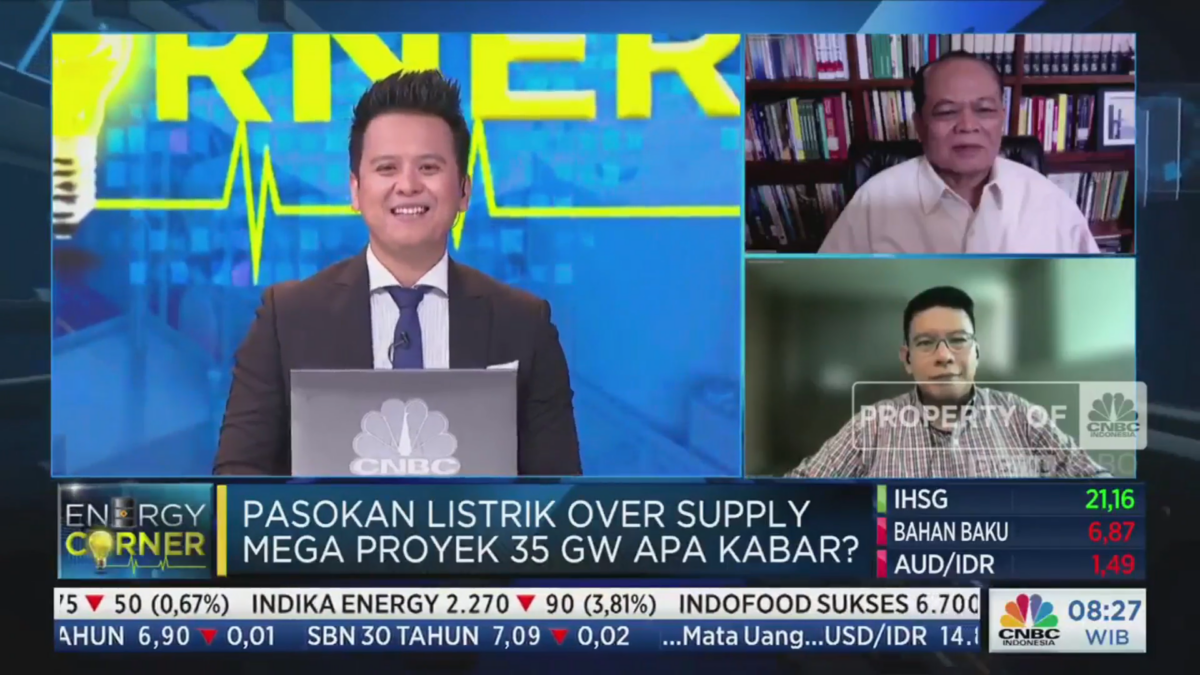Jakarta, February 8, 2023 – The State Electricity Company (PLN) is currently in the midst of a crisis of oversupply of electricity. Several factors cause this, including the pandemic and global recession. In addition, there is a 35 Gigawatt coal power plant megaproject that has been initiated since 2015 and operated at only 47% in 2022. However, there are also several misconceptions about this crisis. In a news program at the CNBC Energy Corner (6/2/2023), Herman Darnel Ibrahim, a member of the National Energy Council, and Fabby Tumiwa, Executive Director of the Institute for Essential Services Reform (IESR), discussed some of these misconceptions.
According to Herman, it is common for electricity service providers, including PLN, to set a percentage of reserve margin. Referencing other countries, 40-50% is a normal rate for the reserve margins to anticipate growth and maintenance. In 2022 alone, electricity growth was recorded at 6.15% (including from private power producers) and is expected to continue to increase in the coming years.
“On the island of Java itself, the reserve margin is probably 60%, while in other places there is a shortage of power. So in the next two years, it is estimated that there will be no overcapacity,” explained Herman.
According to Fabby, the growth percentage stated by Fabby does not reflect the actual rate of growth inside PLN, which is less than 5%. He considers that the current oversupply situation is due to a mismatch in demand projections that form the basis for planning and realizing the 35 GW.
“Of the 35 GW that have been planned, 5.4 GW have not been contracted and have not received funding. It would be good if this amount could be canceled or diverted to renewable energy,” explained Fabby.
Herman and Fabby agree that there needs to be an evaluation from PLN in various aspects. First, it must sharpen demand forecasting for electricity use, while taking into account electricity supply from private generators. This can reduce the possibility of excess capacity, which can result in costs to be borne by the government or increased tariffs on customers.
Second, there needs to be an evaluation of electricity purchase and sale contracts with private power producers, especially those using take or pay clauses. 80% of the excess supply of electricity comes from private producers, and each GW costs the state IDR 3 trillion.
Third, it is necessary to evaluate the schedule between projects. The tendency is that project completion is adjusted to government tenure. This does not match the gradual demand growth for electricity, instead there is a sudden increase in power capacity, which causes overcapacity.
“The COD schedule (commercial operation date) should be determined by PLN, not the government’s term of office. Usually, projects are planned year by year so that there is no under capacity or overcapacity,” said Herman.
“The remaining 5.4 GW is important to monitor. The project is mostly funded by China, while since a few years ago, China has not financed coal plant projects anymore, so if it is certain that there will be no funding, it is better to cancel or divert to renewable energy. Evaluation is then important to provide stability of supply and affordable electricity prices,” concluded Fabby.

